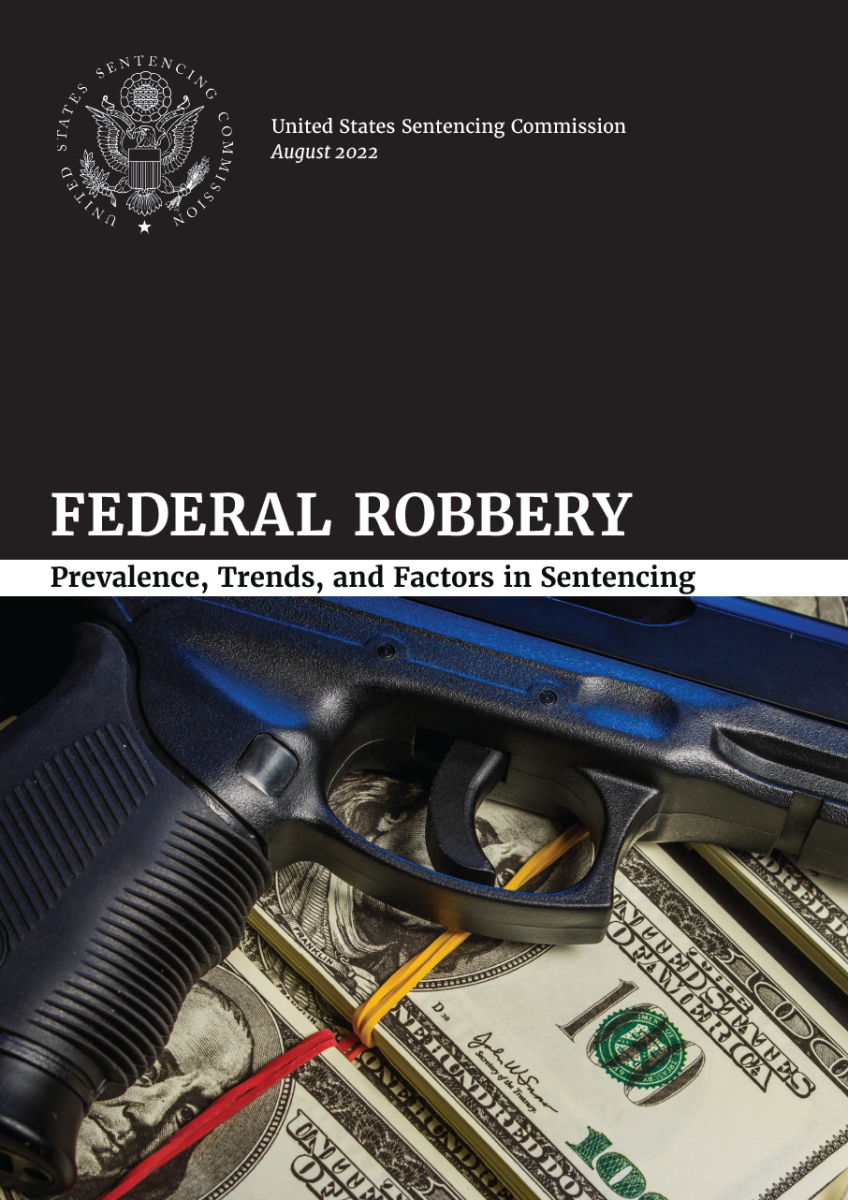Overview

This report builds upon the Commission’s recent observations regarding the high recidivism rates among federal robbery offenders.
Key Findings
-
Robbery offenders have consistently comprised a small but increasing proportion of the federal criminal caseload.
- During fiscal years 2012 to 2021, the proportion of robbery offenders increased from 1.9 percent to 2.3 percent of the federal caseload.
-
Hobbs Act robbery, bank robbery, and carjacking accounted for the overwhelming majority of robbery convictions during the ten-year study period. The prevalence of each of these types of robbery offenses changed over time.
- In fiscal year 2012, more than half (55.9%) of robbery offenders were convicted of bank robbery, compared to 35.5 percent who were convicted of Hobbs Act robbery. In contrast, in fiscal year 2021, more than half (54.2%) of robbery offenders were convicted of Hobbs Act robbery, compared to 29.2 percent of offenders who were convicted of bank robbery.
- The proportion of robbery offenders convicted of carjacking more than doubled during the study period from 4.5 percent in fiscal year 2012 to 11.7 percent in fiscal year 2021.
-
Robbery offenders have criminal histories that are more extensive and more serious than other violent offenders.
- Only one-quarter (26.5%) of robbery offenders were in the least serious criminal history category, CHC I, compared to 40.7 percent of other violent offenders.
- At the other end of the spectrum, 19.5 percent of robbery offenders were in the most serious criminal history category, CHC VI, compared to 12.9 percent of other violent offenders. In addition, robbery offenders were more than twice as likely as other violent offenders to be sentenced as career offenders or armed career criminals (8.4% compared to 3.4%).
- Two-thirds (66.5%) of robbery offenders with prior convictions had at least one prior conviction for a violent offense, compared to 61.7 percent of other violent offenders.
- More than one-third (39.2%) of robbery offenders with prior convictions had at least one prior conviction for robbery, compared to 15.8 percent of other violent offenders.
-
Robbery offenders often engaged in dangerous aggravating conduct. In fiscal year 2021, a majority of robbery offenses involved dangerous weapons and threats of physical force against a victim.
- Over three-quarters (77.6%) of robberies involved dangerous weapons. Firearms were the predominant type of weapon—they were present in 79.8 percent of robberies involving weapons.
- The overwhelming majority (89.7%) of robberies involved a threat of physical force against a victim, and over one-quarter (25.7%) involved the use of physical force against a victim. A victim sustained bodily injury in 11.8 percent of robberies.
-
Robbery offenders received substantial sentences—on average 105 months of imprisonment in fiscal year 2021—but sentences varied significantly depending upon whether the offender was also convicted under 18 U.S.C. § 924(c).
- A substantial proportion (40.6%) of robbery offenders sentenced in fiscal year 2021 also had a conviction under section 924(c) for using or carrying a firearm during the offense.
- The average sentence imposed for robbery offenders also convicted under section 924(c) was 155 months of imprisonment, compared to an average sentence of 71 months for robbery offenders without a section 924(c) conviction.
- Section 924(c) convictions also impacted the anchoring of sentences to the robbery guideline. The average sentence for robbery offenders convicted under section 924(c) was 28 months less than the average guideline minimum, compared to ten months for robbery offenders without a section 924(c) conviction.

